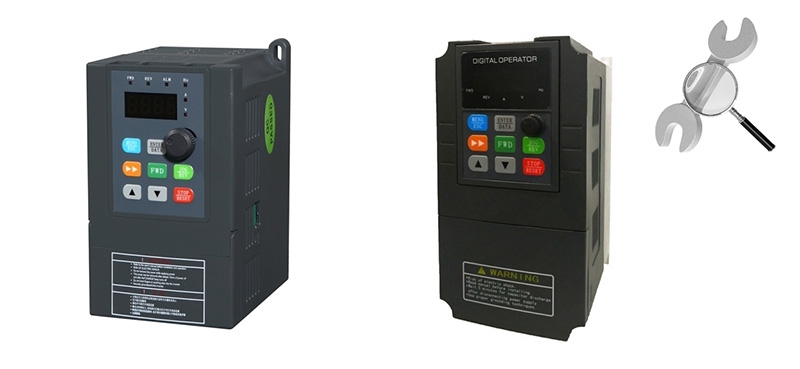The emergence and application of frequency converter simplifies the complex control and makes the production process more convenient and fast. However, like other control devices, the frequency converter will inevitably fail in application. Frequency inverter can be powerful tool in maintaining processes by using diagnostics to solve frequency inverter performance issues and troubleshoot related processes.
Fault analysis in a VFD inverter involves identifying and diagnosing any issues or malfunctions that may occur in the operation of the device. Here are some common fault analysis for frequency inverters.

- Overcurrent Fault. When troubleshooting an overcurrent fault, first check all power connections to make sure they are properly connected. When overcurrent and control problems occur, loose connections or broken conductors are often to blame. Loose power connections can result in overvoltage and overcurrent conditions, blown fuses, and inverter damage. Loose control lines lead to unstable inverter performance, resulting in unpredictable speed fluctuations or inability to control the inverter. Use the auto tuning function if it is available on the inverter. Automatic tuning features on many drives enable the drive to recognize the connected motor, enabling rotor information to be used in processor algorithms for more precise current control. The frequency inverter can also compensate the magnetoelectric flow, giving better control over the current that generates torque. The magnetic flux of the motor is too large and too small will cause trouble.
- High Bus Fault. High bus fault is a common fault caused by external factors. Transient voltage spikes in AC lines or "maintenance loads" generated by machine inertia can cause high bus failures. The rotation speed of the load continues to be higher than the command speed of the motor. When this situation occurs, the frequency inverter protects itself by tripping on a high bus fault and shutting off the insulated gate bipolar transistors (IGBTs). If a high bus fault is indicated, ensure that the ac power supply is consistent and that the deceleration time is adjusted to match the capability of the load. If the process requires rapid deceleration, dynamic braking or a regenerative power control circuit may be added.
- Erratic Operation. If the inverter is running unstable, but does not show a fault, it may be caused by external factors, or it may be the inverter itself has a fault. Understanding the causes of inverter failure can help you determine the root cause of the problem. The root cause that is often overlooked is usually the instability in the process, forcing the inverter to operate under harsh conditions. Visually inspect the inverter for burned or overheated parts by looking for signs of discoloration or cracking. Burned or cracked parts can hinder the normal operation of the inverter. Replace defective parts and test drives before resuming operation.
- Temperature Failure. The working environment of the variable frequency inverter must be within the specified temperature range. The temperature inside and outside the housing is measured to ensure that it is within the environmental specifications determined by the manufacturer. Failure to meet the specified temperature specifications can lead to premature failure of the inverter, as numerous power components rely on sufficient cooling to operate properly. If the ambient temperature is too high, an additional cooling device should be added to the housing, or the frequency inverter should be relocated to a place where the ambient temperature is within the specification range. Low ambient temperatures can also cause problems. Condensation can form and cause component or frequency converter failure.
